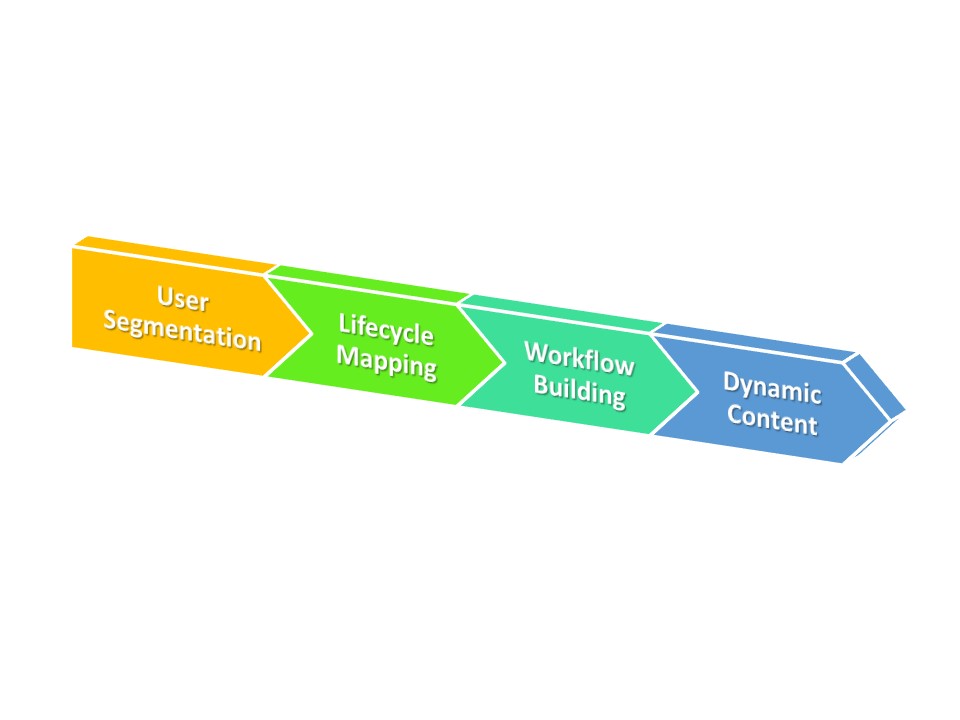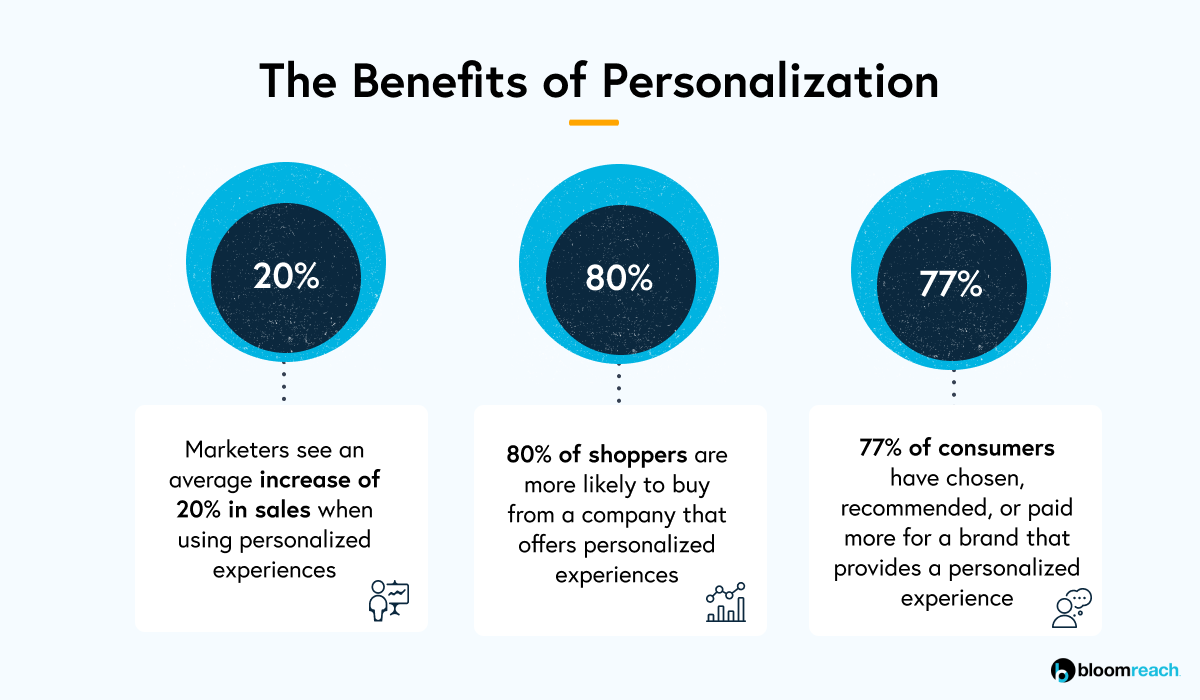Personalization
What is personalization?
Personalization is the practice of showing content, products or other digital touchpoints to a specific set of users or a single user with the goal of increasing relevance. The rules that determine what experience a user gets are often collected beforehand, like purchase behavior or content consumption, and then used to show the user more relevant content as they continue to engage with your brand.
One size fits all is no longer a viable marketing approach. Consumers expect a personalized experience, whether that’s on a website, in an email message or on social media.
When you want to attract more customers, you need to embrace personalization. Read on to learn more.
Key takeaways
- Personalization creates a unique experience tailored to individual customer needs
- Personalization is done for the consumer; customization is done by the consumer
- The four pillars of customization are user segmentation, lifecycle mapping, workflow building and dynamic content
- Personalization is important because customers expect it, it creates a better customer experience, and it’s good for business
Defining personalization
Personalization is the process of tailoring an experience to the needs of a specific individual. You can personalize products, promotions, advertising, websites, mobile apps and more.
Personalization is based on known information about the targeted individual. That can include demographic information (age, gender, location, etc.), interests, behaviors, buying intentions and other categories, garnered from a variety of sources.
The goal of personalization is to improve the relevancy of an offering. Instead of targeting an activity to a broad demographic, it is instead tailored to what is known about each specific individual. By offering a personalized experience, you can hope to more personally connect to your customers – and increase customer loyalty.
Personalization vs. customization
Personalization is similar to but subtly different from customization. While both approaches attempt to tailor experiences to a consumer’s interests, they initiate from different places.
Personalization is initiated by a company for the consumer. Customization is initiated by the consumer for their own benefit.
As an example, a website that tracks the user’s past visits and displays new content based on those visits is practicing personalization. A website that enables users to select specific content or background colors is enabling customization by the user.
In short, companies personalize experiences for customers. Consumers customize their experiences for themselves.
This video discusses the differences between personalization and customization.
The four pillars of personalization
In marketing, personalization is a strategy for offering highly individual experiences based on each consumer’s known characteristics. It involves analyzing consumer behavior, and then using this information to design made-to-order experiences that more fully engage the customer.
There are four essential pillars of the personalization process:
- User segmentation based on individual customer data
- Lifecycle mapping that builds dynamic customer profiles that track the customer lifecycle through activation, nurturing and re-activation
- Workflow building that enables the design of personalized user experiences
- Dynamic content that is tailored for each individual consumer
Each of these pillars represents an important step in the process of personalization. Each pillar builds on previous activity and leads to the next stage, culminating in the dynamic content that creates a personalized consumer experience.

Why is personalization important?
According to Gartner Research, 87% of marketers say they include personalization in their marketing strategy. Why does personalization matter? There are a number of important reasons, including the following:

Customers expect it
In today’s world, personalization is more the norm than the exception. Consumers expect a personalized experience and are disappointed if they do not receive it.
Consider your own experiences as a consumer. When you log into Amazon, you’re presented with products recommended just for you. When you log into Netflix, you see a list of recommended movies and TV shows. When you open your email, you see pitches tailored to your specific needs.
These are all personalized experiences that make your shopping or viewing that much easier. According to a RedPoint Global survey, 63% of consumers say that personalization is the standard of service today. If you don’t offer a personalized experience, customers will shift their loyalty to a competitor that does.
It provides a better customer experience
The reason that customers like personalization is that it provides them with a better customer experience. Personalization immerses the customers in the experience and makes them feel more comfortable with what is being offered. That drives customer engagements, conversions and sales, and long-term customer loyalty.
Customers don’t want an experience that feels generic. They want an experience tailored to their personal needs. They want to feel as if they have your sole attention, not as if they’re just part of a mass mailing or visiting some website designed from a standard template. The more special you can make your customers feel, the more likely they’ll buy from you today and in the future.
Your competitors offer it
If you want customers to purchase what you offer, you must give them an experience that surpasses what they get elsewhere. And, don’t deceive yourself – your competitors are working hard to provide personalized experiences of their own.
An Accenture survey found that almost half (48%) of all consumers have abandoned a company’s website and made a purchase elsewhere because they had a poor experience on the site. What you offer, in terms of both product and marketing, must meet or exceed that offered by your competition. The better you can personalize the customer experience, the more likely it is that you’ll attract and retain the customers you target.
It’s good for business
The bottom line is that personalization is good for your business. Focusing on the customers’ needs and experiences is smart marketing and will put you ahead of competitors offering a more generic experience.
The reality is that customers are more likely to purchase from companies that they know and trust. You can establish that relationship by leveraging what you know about your customers, and using that to provide uniquely personalized experiences.
Let Optimizely help you offer a personalized experience
To grow your business, you need to offer a truly compelling personalized customer experience. Optimizely’s Digital Experience Platform helps you create unique user experiences at every digital touchpoint. Our personalization services build on real-time user data and insights to provide personalized content, campaigns, products and website layouts. Let Optimizely help you take the guesswork out of personalization for your customer base.
Contact Optimizely today to learn more about personalization.




